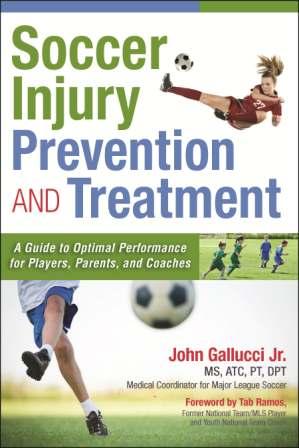By John Gallucci, Jr., MS, ATC, PT, DPT
As coaches and parents working with youth athletes, our primary concern should be their proper growth and development. Injuries specific to the youth athlete often arise from various growth patterns and disorders, combined with acute or chronic trauma.
The youth-specific conditions listed below, can be easily managed with proper care and treatment.
Sever's Disease
Sever's disease is a painful bone disorder resulting from inflammation in the growth plate (an area of growing tissue at the end of a developing bone) in the heel. It is a common cause of heel pain in growing kids, especially those who are very active and run a lot. This condition typically arises during the growth spurts in the adolescent years; between the ages of 8 and 13 for girls, and 10 and 15 for boys.
Signs and symptoms of Sever's disease include:
- pain, tightness, swelling and sometimes bruising in the heel
- increased pain with running and jumping activities, and may be exacerbated with a tight shoe or boot
The initial treatment of Sever's disease is RICE: Rest, Ice, Compression and Elevation. Should symptoms rise, athletes must simply be treated appropriately with rest and modified activity. After enough recovery time has passed, the athlete can participate at a 50-75% level in order to keep them involved while limiting the trauma to the heel.
Osgood-Schlatter's Disease
Osgood-Schlatter's disease is very similar to Sever's disease, but occurs at the knee joint rather than the heel. Most often, it only affects one knee, and is more prevalent in boys than in girls. It is very common, occurring in about 20% of the population, or in one of every five youth athletes.
Signs and symptoms of Osgood-Schlatter's disease include:
- swelling and inflammation directly at the knee, often with point tenderness
- a visible, painful bump just below the knee joint
- tightness in the muscles surrounding the knee, including the hamstring and quadriceps
As with Sever's disease, there needs to be a period of RICE to reduce pain and swelling at the knee. Once inflammation is controlled, the surrounding muscles need to be strengthened and stretched, increasing elasticity until the pain decreases and he or she can gradually start to play again.
Patellofemoral Syndrome
Patellofemoral syndrome is an overuse injury seen in youth athletes, caused by friction on the cartilage under the kneecap. This causes a softening, roughening or general degeneration of the cartilage under the kneecap.
Signs and symptoms of patellofemoral syndrome include:
- pain and swelling behind the kneecap
- compensatory changes in running and gait pattern
- pain that is aggravated by activity AND long periods of sitting
- tightness or a feeling of fullness at the front of the knee
Once again, a RICE protocol is essential to limit the inflammation caused by patellofemoral syndrome.
It is also important to get the quadriceps muscle on the inside of the thigh strong enough to keep the kneecap in the proper place. Good exercises for this muscle are:
- quad sets
- straight leg raises
- adductor leg raises
If not treated appropriately, all three of these growth injuries can have more lasting effects into adulthood.
John Gallucci, Jr., MS, ATC, PT, DPT, is President, JAG Physical Therapy & JAG Pediatric Therapy, Medical Coordinator, Major League Soccer, and the author of the new book, Soccer Injury Prevention and Treatment: A Guide to Optimal Performance for Players, Parents, a nd Coaches. A former Head Trainer of the New York Red Bulls MLS team, Galluci is a Sports Medicine consultant for professional athletes in the NHL, NFL, NBA, MLB, and USA Wrestling. He has also worked in the Athletic Departments of Columbia University, New York University and Long Island University, and been a Clinical Instructor at Columbia University, Seton Hall University, Rutgers University, and Dominican College.
nd Coaches. A former Head Trainer of the New York Red Bulls MLS team, Galluci is a Sports Medicine consultant for professional athletes in the NHL, NFL, NBA, MLB, and USA Wrestling. He has also worked in the Athletic Departments of Columbia University, New York University and Long Island University, and been a Clinical Instructor at Columbia University, Seton Hall University, Rutgers University, and Dominican College.
John is the former Program Director of Barnabas Health's Sport Medicine Institute and also serves as an appointed member on the New Jersey Governor's Council on Physical Fitness and Sport.








